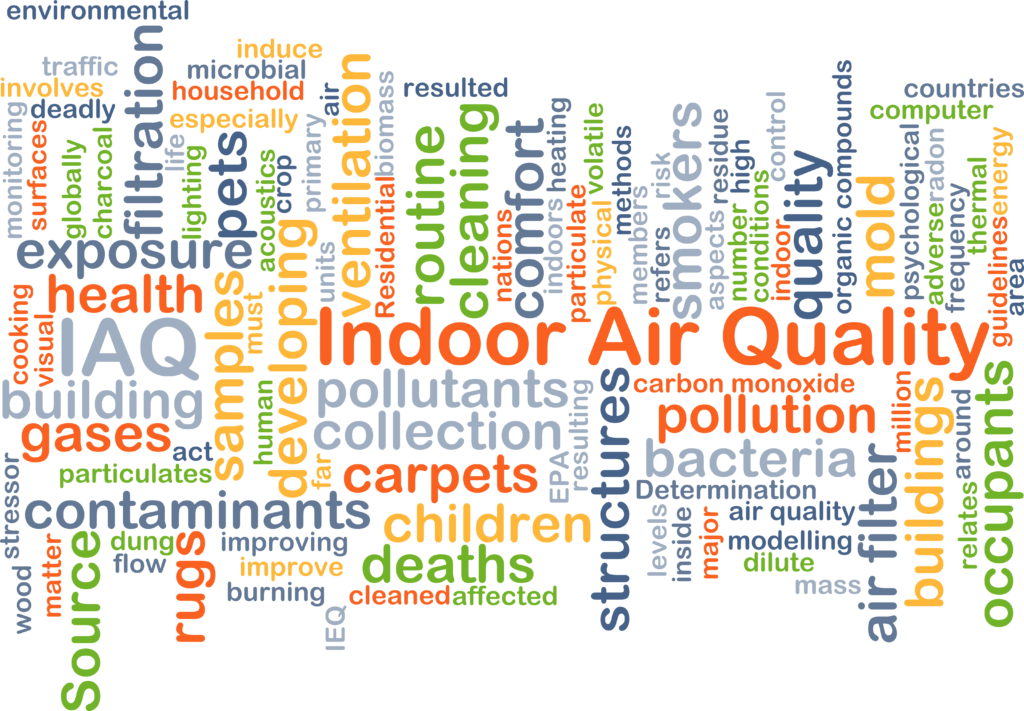
Note: This blog post is abridged from a webinar hosted by Brant Kasbohm of Automation Components, Inc. on Feb. 11, 2021
Since the onset of COVID-19 more attention has been paid to Indoor Air Quality (IAQ) and its relationship to occupant health and safety. Defined by the EPA as “the air quality within and around buildings and structures, especially as it relates to the health and comfort of building occupants,” IAQ is important to measure and control for a variety of reasons.
Poor IAQ can cause a plethora of short-term effects, including irritation of eyes, ears, nose, and throat, fatigue, dizziness, exacerbation of conditions such as allergies, and increased absenteeism. Measuring and controlling IAQ is not only important for a building occupant’s comfort, but it also has the potential to mitigate the spread of bacteria and viruses. While there is no global standard for IAQ at this time, several countries, states, and organizations have published guidelines for VOC (Volatile Organic Compound) measurement. Also, several US states have requirements or codes for CO2 measurement; California recently passed a law requiring CO2 monitoring in classrooms. Regulations are constantly changing, and new ones are emerging. Being knowledgeable is important.
Internal causes of poor IAQ are numerous and include fumes from combustion appliances, tobacco smoke, off-gassing of building materials (asbestos, paint, flooring, other chemicals), cleaning products, personal care products, and many other sources. High temperature, relative humidity, and occupancy levels of a space can also contribute to poor indoor air quality; essentially the more people in a space the lower the IAQ. Inadequate ventilation via too low of air exchange or lack of demand ventilation also contributes to poor IAQ. Sources can also come from the outside in things such as pollen, radon, pesticides, smog, smoke, and other outdoor air pollutants.
There are several solutions currently available to help improve IAQ, each coming with its own pros and cons. Air Cleaning and Disinfection via UV irradiation, Ionization systems, and others can reduce viruses and bacteria in the air, but may not reduce CO2, other gases, or particulate matter. Adding or improving filtration in a building’s ductwork can remove dust, pollen, debris, and other particulate matter. However, it can put a strain on existing fans and motors, affect the building’s pressurization, and potentially lead to premature equipment failure or additional maintenance being needed. It also does not remove CO2 or other gases. Maintaining a proper RH level in your space can reduce the spread of microbials and potentially save energy. Increased Rh levels may cause mold growth and some building materials may not be amenable to higher or lower Rh levels. If you are adding Rh to the space, the IAQ is only going to be as good as the quality of the water.
The easiest way to improve all aspects of IAQ is to increase ventilation by bringing more outdoor air into the space. It will improve levels of microbials, particulate matter, and gases such as CO2. Doing this brings with it higher energy costs as well as potentially higher equipment costs; so there is a balancing act between improving IAQ and energy efficiency. In many parts of the US simply adding more outdoor air to a building will lead to dramatically higher utility bills for most of the year. In short, there is no one-size-fits-all solution. However, in a post-COVID world where thousands of buildings are vacant, improving IAQ, and proving and documenting that improvement, will be a way to encourage people to return to offices, arenas, theaters, restaurants, and other facilities.
Consider ACI’s wide variety of sensor and transmitter solutions for monitoring and controlling various parameters of IAQ, including products for Temperature, Relative Humidity, Pressure, CO2, TVOC, and Particulate Matter.
Ask your KMC Representative for more information on the various solutions and configurations that are available through KMC.
Let’s continue the conversation.
 Cart
Cart